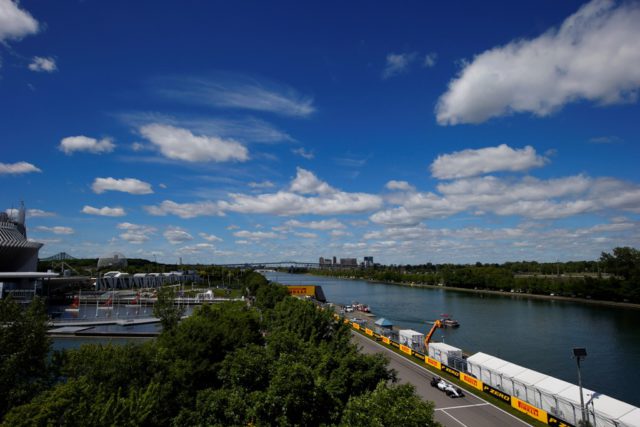Few circuits on the calendar test the stopping power of a Formula One car quite like Montréal where the Canadian Grand prix will take place. Drivers spend 60% of the fast, semi-permanent, street-style lap at full throttle, before hammering the anchors into the several heavy braking zones – making Montréal one of the highest energy circuits for brakes on the entire calendar.
With its near perfect blend of high-speed straights broken up by tight corners, drivers hit an average pedal load per lap in excess of 750kg at the Circuit Gilles Villeneuve. That’s 52,500kg pedal load on average over a 70 lap race. The peak is over 120kg as they stamp on the brakes into Turn 13.
The high-speed nature of the circuit amplifies this braking effect, as teams run their cars in a low-drag guise in Montréal. Teams chase high speeds down those long straights. That means cars are braking from an even greater velocity with less aerodynamic drag to help slow them down under braking. The scenario is even worse when a tail wind picks up along the two main straights, increasing outright top speeds to over 327km/h.
Montréal features seven heavy braking zones, with Turn 13 – the sharp-flick right through the chicane which opens up into the run along the infamous Wall of Champions – the most severe. The drivers approach that final chicane at a top speed of 320km/h, before planting their foot on the left pedal and slowing to 140km/h in just 90metres.
Under braking for the slowest part of the track – the Turn 10 hairpin – drivers go from 300km/h to 65km/h in around 120m. Drivers experienced an average deceleration of 4.3G in the 2016 edition of the Canadian Grand Prix. But with the introduction of extra downforce and wider tires in 2017, we can expect to see decelerations of over 5G – an incredible figure.
Montréal features seven heavy braking zones, with Turn 13 – the sharp-flick right through the chicane which opens up into the run along the infamous Wall of Champions – the most severe
These stops come thick and fast in Montréal. 19% of the lap is spent on the brakes. And it’s this frequency, not just the intensity of the circuit’s many braking zones, that puts extra pressure on teams to manage the huge amount of energy created.
This energy – 149 kWh dissipated per race – is turned into heat, with modern F1 brake discs reaching 1,000 degrees Celsius in a single braking zone. This immense heat also has a knock-on effect on tires, brake calipers, and sensors. Teams and drivers have to control temperatures. You’ll often see drivers darting out of the slipstream to cool their brakes before hitting another heavy braking zone. Or deploying the famed ‘lift and coast tactic’ at certain points in the race.
Managing temperature in Montréal is absolutely crucial in traffic – and often simply in terms of ambient temperature on a warm weekend – because if a driver overheats his brakes, wear will become excessively high, costing valuable performance. It’s a 70 lap battle to manage temperatures. But, as we see almost every year, it’s not a battle everyone will manage to come out on top of.
To combat these unique challenges teams make special preparations. They carry out a series of simulations before heading to Canada to understand the exact brake energies. An additional task is to ensure that there is sufficient cooling available on the car. Teams also pack the thickest discs and pads possible for the weekend.
Whatever the result of Sunday’s Canadian Grand Prix, Montréal will be sure to give all drivers’ left feet one heck of a workout…

































